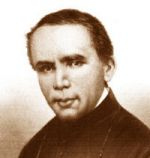Catholic Activity: Halloween, All Saints, and All Souls
Father Weiser explains some Catholic customs of these feasts, and ideas to implement them in the family.
DIRECTIONS
All Saints The feast of All Saints was established by the Church because a very large number of martyrs and other saints could not be accorded the honor of individual celebrations since the days of the year would not suffice. Therefore, as the prayer of the Mass states, "we venerate the merits of all the saints by this one celebration." There is another reason for the feast. Pope Urban IV mentioned it in the following words: "Any negligence, omission and irreverence committed in the celebration of the saints'' feasts throughout the year is to be atoned for by the faithful, and thus due honor may still be offered these saints."(Pope Urban IV, Decretale Si Dominum.)
It might be pointed out that from the very beginning the commemoration of All Saints included also, in a special way, the Blessed Virgin. When Pope Boniface IV, in 615, dedicated the former pagan temple of the Pantheon in Rome as a church, he called it the church of the "Blessed Virgin Mary and all the Martyrs." Thus All Saints is really a great feast day of Mary, too.
Perhaps this could be the day to acquaint the children with the litany of the Saints, by saying it together at the family devotion or by encouraging the older ones to recite it on their own. They should become aware of the groupings of saints under collective invocations ("All holy patriarchs and prophets," etc.). Thus they will understand that the Church does not try to mention all saints individually but only chose a few representatives of each group. The second part of the litany will teach the children how to pray for the main needs, both temporal and spiritual, of the whole Christian world.
It was, and still is, a general custom to serve special "All Saints" pastry on this day. Usually it is made of sweet dough, with eggs, milk and raisins, and shaped in different forms and sizes according to tradition in various places. Perhaps families in this country could make such All Saints cakes, too? It does not matter what kind of mix and shape is used, as long as it is a distinctive feature of the feast and will remain associated with All Saints day in the minds of the children.
All Souls The commemoration of all the holy souls in Purgatory was introduced by St. Odilo, abbot of Cluny, about the year 1000. He prescribed that all the monks of his Benedictine congregation should offer the holy Sacrifice and say prayers for the suffering souls every year on November 2. The popes in Rome gladly accepted this wonderful and charitable thought and extended the celebration to the whole Church. Since then we do not only pray for the holy souls throughout the year but have a special day devoted to their prayerful memory. Pope Benedict XV, in 1915, allowed all priests to say three Masses on All Souls Day, so our dear departed ones will receive greater help from us and an abundance of mercy from God.
The main religious exercise we can perform on All Souls day is, of course, to attend the holy Sacrifice and offer it for the departed ones. That is why an ancient custom in many countries demands that at least one member of every family go to church and Mass. It is also a custom to say the rosary or other prayers at home for the holy souls, and to do some acts of charity for their sake.
On the afternoon of All Saints day, and during the whole of All Souls, many Catholics go to the cemeteries to pray at the graves of their dear departed. They decorate the tombs with lights and lanterns, and all the graves are adorned with flowers.
Catholic parents might prudently explain to their children that we should not only pray for the holy souls to help them, but that we may also pray to them for their intercession and help. It is a fact often mentioned among sincere Catholics that the holy souls invariably show their great power of intercession by unusual and surprising answers to our petitions. Not only in big and serious matters but even in little things they seem anxious to help us if only we turn to them in great confidence.
Halloween Although the name of this tradition is taken from the great Christian feast (All Hallows' Eve), the observance of Halloween pranks, masquerading, "trick or treat" and similar features, are not based on any religious background nor connected with any Christian meaning. This practice has come down to us from the demon lore of the ancient Druids.
In a Catholic home, therefore, the participation of the children in such Halloween activities should not be explained as a part of the Christian feast, because such explanations would be erroneous. It is an ancient popular custom from pagan times which has never been associated with Christian meanings. Let the children enjoy their Halloween festival, if you wish, but apart from it direct their minds to the fact that this evening is primarily a time of preparation for the great feast of All Saints, and that after the Halloween frolics they should turn their minds to God in a devout evening prayer, and greet all the heroes of God on the eve of their feast.
Activity Source: Year of the Lord in the Christian Home, The (reprinted as Religious Customs in the Family) by Francis X. Weiser, S.J., The Liturgical Press; reprinted by TAN Books and Publishers, 1964






